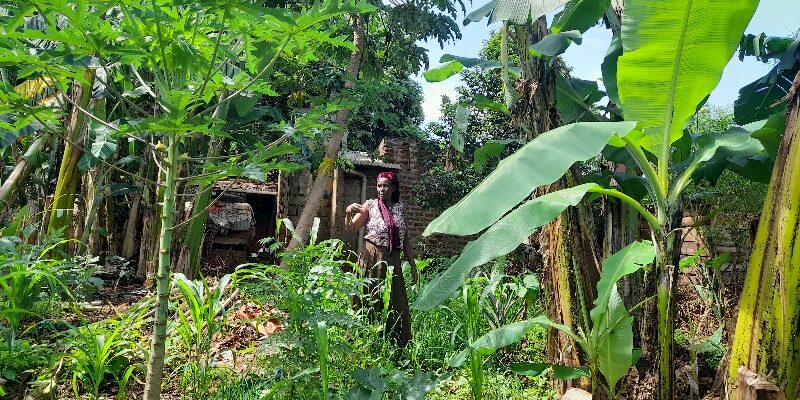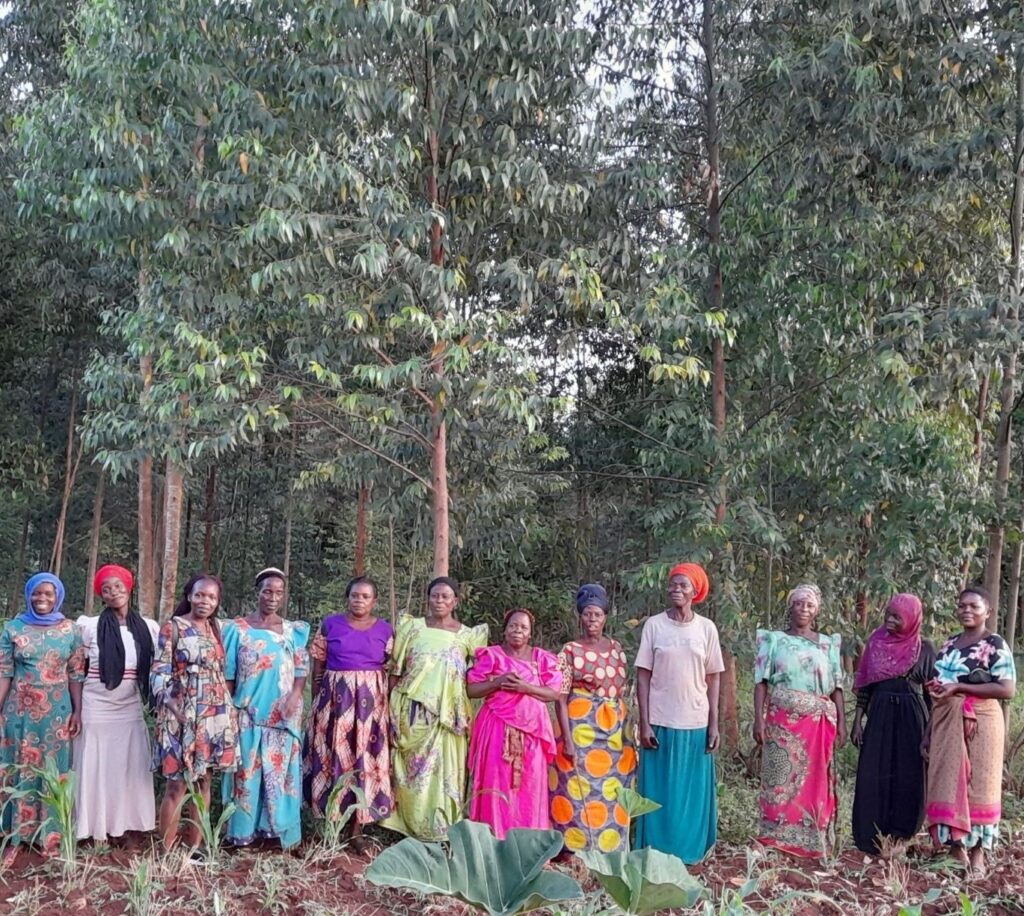
GENDER CLIMATE CHANGE AND FOOD SECURITY IN GRASSROOT COMMUNITIES.

The agency of rural female farmers is essential for enhancing agricultural productivity and realizing the Sustainable Development Goals (SDGs), including ensuring food security (SDG 2) and addressing the perils of climate change (SDG 13). Despite significant strides in addressing gender inequalities over the years, rural women are still among the most marginalized groups in society and are particularly vulnerable to current and future climate change and food insecurity. Given these close relationships, the response to climate change vis-à-vis the agricultural sector should therefore take into account gender dynamics and be gender-responsive.
Deforestation has had negative impacts such as climate change, reduced environmental services such as watershed and soil protection, reduced biodiversity, a threat to wild life and caused a reduced supply of wood and non-wood Forestry products in Busoga sub-region threatening food security. With a big demand for charcoal, fire wood and Timber Deforestation still continues and few people are sensitized to plant trees as an environmental protection. Grassroot women are more affected as they have to make sure there is food, water and other basics in the home. Drought and heavy rains destroying food is a big problem that has resulted from cutting down trees in these communities.
Cutting down trees in the region has led to many pests shifting from forests to the cassava plants and other crops as we fight pests we continue to encourage communities to plant trees as a mitigation to climate change and one of the solutions to food security.
- We basically encourage fruit tree planting for;
Medicine, Apart from providing you with the sheer joy of picking out fresh fruit without stepping out of your home, fruit trees can also contribute to a healthy ecosystem. Fruit trees produce fresh oxygen, giving you and your family cleaner air to breathe, as well as encouraging wildlife to flourish. Fruit tree leaves, back and roots are used as medicines to cure some illnesses.
Food and Nutrition, the longer a fruit or vegetable has been picked from its plant, the more vitamins and nutrients it will lose! These compounds naturally deplete over time, so the key to getting the most nutrient-dense fruit is by eating them straight from the tree! On top of that, when you grow your own fruit, you can use natural, organic products for pest control to avoid coating your food with chemicals. The fruits also won’t be sprayed with preservatives or waxes to extend their shelf life, like a lot of supermarket produce.
Income, Fruits are expensive if you have a fruit tree means you are accessing fruits for free that reduces on your expenses. If you sell the fruits you bring in an income and fruit trees are easy to maintain.
Manure, the leaves that fall off the trees can be used in the garden to add fertility to the soil.
Feed and protect animals, trees offer a safe refuge for birds, squirrels, insects, and other critters that are necessary for maintaining the ecological balance of the places we live. Without trees they go into our gardens destroying food hence turn out to be a threat to food security.
Provide shade, help the environment, keeps homes cool and act as wind breakers,

Planting Trees Decreases Your Carbon Footprint
It should come as no surprise that planting trees helps the environment since they absorb CO2 emissions from the atmosphere and convert it all into fresh, clean oxygen. But that’s not the only reason why planting a mango tree reduces your carbon footprint!
When fruit is shipped from across the world, that’s a whole lot of fuel getting burned up in the process, resulting in significant greenhouse gas emissions. If more people grew their own fruit at home and there was less of a demand for imports, that could make a huge difference in helping to fight climate change.
2. The soil has lost fertility due to over use and soil erosion we encourage farmers to feed the soil so the soil feeds you. Putting organic manures and fertilizers in the soil made from available resources and top soil manure covering (mulching) to protect the soil .
3. We can not forget Sustainable land management this is crucial to our changing times. Sensitizing grassroots women to manage Land resources used for a variety of purposes which may include organic agriculture, reforestation, water resource management as well as encourage grassroots women to tap rain water.
4. Growing Drought and disease resistant groups like Cassava as a means to be resilient and adopt to climate change. Cassava being a crop that can stand harsh conditions it is a solution to food security and it is a crop that can be grown in many parts of the Busoga region.
5. Practicing Smart Agronomic practices. Climate-smart agriculture is a pathway towards development and food security built on three pillars: increasing productivity and incomes, enhancing resilience of livelihoods and ecosystems and reducing and removing greenhouse gas emissions from the atmosphere. Mitigation practices that farmers can choose from include tree planting/agroforestry, easy to assemble energy saving stoves, tree conservation and restoration, intercropping, conservation agriculture, crop rotation, integrated crop-livestock management, Organic fertilizers and manures and improved water management.
6. Land Access and Ownership. In most parts of the world, women play a major role in agricultural production, a critical component of
food security – women farmers bring to bear valuable knowledge in seed selection, vegetative propagation
and the reproduction of plants and animals. A growing body of evidence in international development
establishes that gender equality at the household and community levels leads to superior agricultural and
development outcomes, including increases in farm productivity and improvements in family nutrition.
Agriculture-specific data similarly
shows strong correlation between women’s empowerment and agricultural productivity. Thus, according
to the Food and Agriculture Organization (FAO), if women farmers were given the same access to
resources (such as land and credit) as men, national agricultural production could rise by 2.5 to 4 percent
and the number of malnourished people could be reduced by 12 to 17 percent. Therefore empowering women to access and own land is a great way to mitigate climate change and food security.
